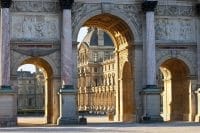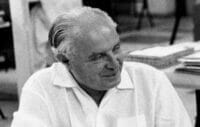
Rococo Style: How it Distincts in Architecture, Furnishings and Painting
Rococo Style: Birth and Development The Rococo, as a reflection of the trends, tastes and way of life of France…
early eighteenth century
80 x 170
Pseudo-Vitali (Active in Bologna in the first half of the 18th century)
Couples of Living Natures with chickens, sheep, wicker basket
Oil on canvas, 80 x 170 cm
With frame, 95 x 185 cm
Critical Card Prof. Alberto Crispo
Bibliography: R. Roli, Bolognese Painting 1650-1800. From Cignani to Gandolfi, Bologna
A. Cicatelli, entry in Art and Piety. The cultural heritage of the Charitable Works, exhibition catalogue, Bologna 1980, p. 208. 1977
M. Danieli, For the still life in Bologna. Two additions to the 'pseudo-Vitali'
The two compositions of the same size in horizontal format are clearly attributable to that line of still lifes and live lifes of Bolognese tradition created for some noble residence. In the first one, a piece of live nature is described in which white sheep with thick fur are depicted together with live and dead fowl within an airy landscape. In the second canvas, the duck accompanies some dead fowl and some wicker baskets and animal cages.
The extremely high quality of the two canvases allows us to return them to the catalogue, still to be reconstructed, of a very refined, yet enigmatic, painter active in Bologna between the 17th and 18th centuries: the so-called Pseudo-Vitali.
This personality has been identified relatively recently and owes his name to the Bolognese characteristics present in his works and to the close relationship with the style of Candido Vitali (1680 – 1753), a highly skilled painter of still lifes who enjoyed extraordinary success.
The critical story that led to the birth of the pseudo-Vitali began in 1977 when Renato Roli included in the catalogue of the painter Candido Vitali a Still Life with Chickens and a Basket of Flowers now preserved at the Opera Pia dei Poveri Vergognosi. The scholar Amelia Cicatelli traces some similar characteristics in another canvas with Birds and Melon from the Dava Bargellini Museum, which however differ from the art of Candido. And from here the first nucleus of works starts that form a solid point for the drafting of the catalogue of our artist. In subsequent years scholars such as Daniele Benati and Alberto Crispo have further expanded the painter's catalogue, to which these two unpublished canvases are now added.
On more than one occasion there has been an attempt to bring this skilled personality out of anonymity. In fact, we owe to the scholar Daniele Benati a suggestion of a possible identity with Andrea or Giacomo Monticelli, contradicted only by the feeble reconnaissance carried out by Massimo Pulini in an attempt to superimpose the figure of Pseudo Vitali with that of Carlo Cittadini (?-1661).
In his works it is possible to detect a usual repertoire of animals, flowers, fruits and vegetables dictated by a frank and real rendering. The remarkable ability of the pseudo-Vitali to structure the space in depth, to integrate the still life into the landscape context and to harmonize the surrounding vegetation with the composition, draws inspiration from the influence of the most illustrious master of the Bolognese still life of the 17th century, Pier Francesco Cittadini. Look at examples such as Vegetables and Fruit from the Galleria Estense in Modena or the Vase with Musical Instruments (Galleria Colonna, Rome).
Nevertheless, the exclusive focus on Bolognese influences does not fully account for the stylistic complexity found in the works attributed to the pseudo-Vitali. The marked concreteness of his representations suggests a deep awareness of the dominant artistic currents in western Emilia. In particular, a notable affinity with the production of Felice Boselli is evident, whose compositions share a similar repertoire of subjects and a similar formal approach. The stylistic affinities are not limited to single elements, but embrace the entire conception of the landscape, in which the background opens up like a theatrical backdrop of lush trees enveloping a twilight and dark sky. A more careful analysis also reveals patronage links with the work of Angelo Maria Crivelli, known as Crivellone, suggesting an artistic dialogue and mutual influence between the two painters. Furthermore, to prove the great technical and constructive ability of the painter, it must be underlined that the pseudo Vitali often goes beyond the easel format common to all the other Bolognese specialists, including Candido Vitali himself. The large paintings that are part of his catalogue indicate an artist specialized in the decoration of large rooms, since it is obvious that canvases of such dimensions could not fulfill the function of overdoors or furnishing accessories common to still life paintings.
It cannot be ruled out that he had some contact with clients from Parma, Lombardy or Piedmont, who commissioned large cycles of canvases depicting landscapes and animals from Boselli and Crivellone, with which to decorate their suburban or even city residences.

Rococo Style: Birth and Development The Rococo, as a reflection of the trends, tastes and way of life of France…

The Empire style, with its magnificent fusion of majesty and grace, remains an icon of classic furnishings, exerting a timeless charm…

Giò Ponti is one of the artists who most dominated the Italian post-war period, acting as a spokesperson for important innovations in the world…
have viewed this article in the last 30 minutes.